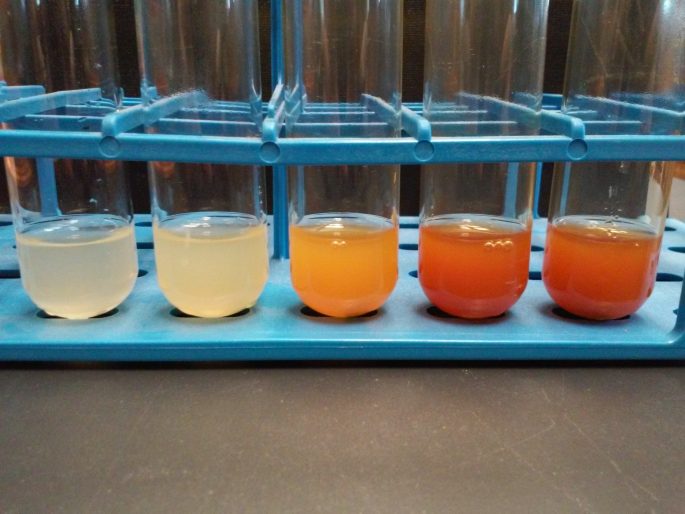Posted 3:07 p.m. Monday, Aug. 17, 2020

Alum finds impactful new way to use smartphones: destroy them.
People value smartphones for all kinds of reasons.
They hold a library’s worth of information but fit comfortably in the palm of your hand. They come with an array of apps for seemingly every purpose imaginable. And they help people connect and communicate at a moment’s notice, whether they live a few houses away or thousands of miles apart.
Elizabeth Skovran values smartphones not for what they’re capable of, but for what they’re made of.
Skovran, ‘96, is a professor researching methylotrophic bacteria at San Jose State University. She’s interested in smartphones, she says, because they contain rare earth elements that can be stored and recycled by methylotrophic bacteria — a fact that has major implications in the spheres of health care, manufacturing and sustainability.
“I enjoy solving metabolic puzzles in bacteria, then using that information to bioengineer bacteria for an application that will benefit society,” Skovran explains. “In my lab, we are actively bioengineering an environmentally friendly bacterial platform that can recycle rare earth elements from post-consumer electronics like discarded hard disc drives and cell phones. These elements have important uses in green energy technologies and medical diagnostics, but mining for them is costly and environmentally destructive.”
Instead of destroying the Earth to obtain these precious elements, Skovran and her team of student researchers pulverize used smartphones. To be precise, they throw them in a blender and hit the “on” switch.
The goal, she says, is to change the DNA of these bacteria so they can store even greater amounts of rare earth elements.

Such a breakthrough would provide a major boost to businesses that rely on these elements, such as pharmaceutical companies that use gadolinium as an MRI contrast agent and technology manufacturers that produce magnets containing neodymium.
The process of experimentation and discovery is also deeply impactful to the student researchers who are getting their start in Skovran’s lab.
“I love working with students and introducing them to the fields of study that I find so fascinating,” she says. “I enjoy breaking down concepts one on one with students and watching their faces light up when they finally understand a process they have been struggling with. While I help direct the research, the research experiments themselves are all carried out by students.”
Skovran’s passion for microbiology was ignited 25 years ago, when she was a student herself.
During her first two years at UWL, Skovran struggled to find the right career path. She bounced from pre-physical therapy to therapeutic recreation to pre-med to pre-vet. Nothing seemed to stick — until she took a bacterial genetics course with professor emeritus Marc Rott.
While taking that class, “I decided that I wanted to ‘be’ Marc Rott. I wanted to use genetics to make discoveries in bacteria and teach bacterial genetics to undergraduates,” she says. “My mind was blown when Marc held up a flask and said, ‘There are more bacteria in this small flask than people on the planet.’ I was amazed by how a simple bacteria cell — which isn’t so simple — sensed and responded to its environment and carried out processes in such a smart way.”
Skovran went on to earn her doctorate at UW-Madison and perform postdoctoral research at the University of Washington in Seattle. She’s taught at San Jose State for the past eight years.
At every stop, she says, she gained a greater appreciation for UWL’s Microbiology Department — and for her decision to change majors one last time. “I was very fortunate to be a student at UWL with so many great and dedicated professors,” she notes. “At the time, I did not appreciate how much work they put into their job. It’s difficult to get across to people just how many hours a week are spent working as a professor. But the job is extremely rewarding, and there is the opportunity to really make a difference in people’s lives.”
